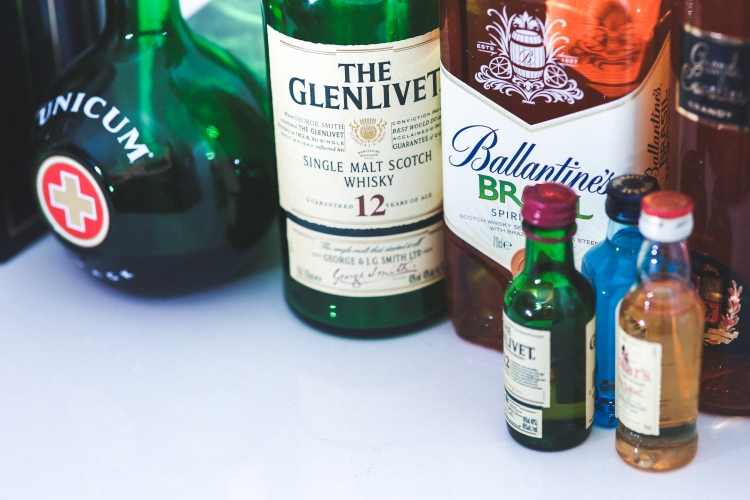The Perils of Drinking Your Dinner

In a society where heavy drinking is expected and accepted, yet weight gain is not, what is someone to do? When tabloids are filled with images of svelte actors who seem to subside solely on free drinks and cigarettes, the behavior can easily be found trickling to contemporary youth culture. For some, drunkorexia is the dangerous routine that enables a night out on the town.
Drunkorexia is a slang term for self-imposed starvation or binge eating/purging combined with alcohol abuse. Research on this combination of an eating disorder and binge drinking has primarily focused on the patterns of college-aged women, but the phenomenon is also prevalent among young men.
A study by the University of Missouri found that 30% of female college students admitted that they had restricted their food intake in order to consume greater quantities of alcohol at least once in the last year. The same study found that men are more likely engage in similar behavior in order to save money for purchasing alcohol. According to the study, 67% of students who restricted calories prior to alcoholic beverage consumption did so to prevent weight gain, while 21% did so to facilitate alcohol intoxication.
According to the National Eating Disorder Association in 2006, approximately 20% of American college students admitted to suffering from an eating disorder at some point in their life.
The National Association of Anorexia Nervosa and Associated Disorders reports that 72% of women who admit to alcohol abuse also classify as suffering from an eating disorder.
There appears to be a link between eating disorders and substance abuse, with studies revealing that people experiencing an eating disorder are at a higher risk of developing substance abuse problems.
According to the National Institutes of Health, one in six people in the US have a drinking problem and approximately 10 million Americans are believed to suffer from potentially life-threatening eating disorders.
A report by U.K.-based healthcare society, Benenden's National Health Report 2016, has found that one in five people starve themselves so they can drink alcohol in place of lost calories.
In France, the OFDT reported that between 2005 and 2010, episodes of drunkenness have increased, particularly among young women 18 to 35 years old. Their one-time drinking in large quantities increased from 30 to 42%.
Symptoms of Drunkorexia
-
"Calorie counting"
-
Missing or skipping meals to conserve calories for consumption of alcoholic beverages.
-
Over exercising to counteract for calories consumed by alcoholic beverages.
-
Consuming an extreme amount of alcohol to to induce vomiting.
The combination of starvation and alcohol abuse can lead to an array of physical and psychological consequences. Drinking on an empty stomach can predispose individuals to a higher rate of blackouts, alcohol poisoning, alcohol-related injury, violence, or illness. Ethanol reaches the blood system at a faster pace and therefore raises one's blood alcohol content at a dangerous speed, which can lead to alcohol-related brain damage. In addition, alcohol abuse can have a detrimental impact on hydration levels and the body's retention of minerals and nutrients.
Drunkorexia can lead to short term and long term cognitive problems including difficulty concentrating and difficulty making decisions. It also increases the risk of developing more serious eating disorders or alcohol abuse problems. As binge drinking is involved, there is a greater risk for violence, risky sexual behavior, alcohol poisoning, substance abuse, and chronic disease later in life.
The motivations behind drunkorexia are not easily understood as it is a combination of multiple disorders. It is suspected that a distorted self-perception due to unrealistic standards of body image, peer pressure, and anxiety and depression may lead to drunkorexia. Other motivations for drunkorexia might be weight gain prevention, faster intoxication, and money saving.
"Alcohol sellers work as the tobacco manufacturers once did to make alcohol desirable to young women," explains Michel Reynaud, psychiatrist and addiction specialist at the Paul-Brousse Hospital in Villejuif. “The increase in their consumption coincides with the authorization of the alcohol advertising on the Internet, the explosion of social networks, happy hours, the arrival of the premix... In short, drinking for women became cool. The result, “drunkorexia" lurks in a permissive and pessimistic society where alcohol, yet counter, is the most dangerous toxin. And where to party and to ponder is the decompression valve for a generation who does not want to make choices. In parallel, many young women are victims of contradictory ideologies ('be slim' and 'fun') and suffer a flimsy, unstructured and narcissistic plan."
What does it say about society when it’s more important for youth to maintain the illusion of health by appearing thin, while drinking to excess?







